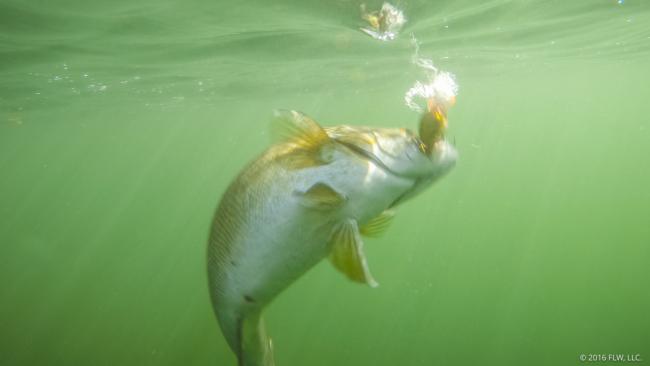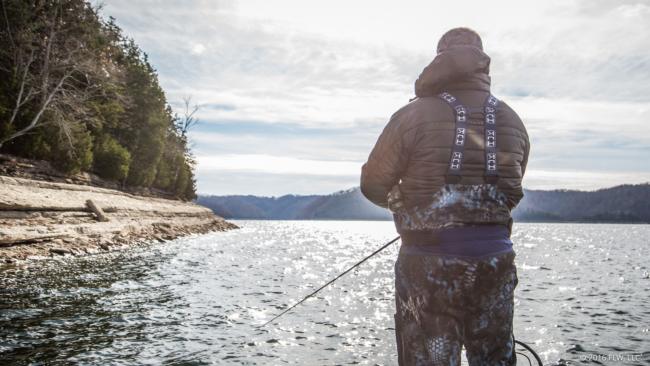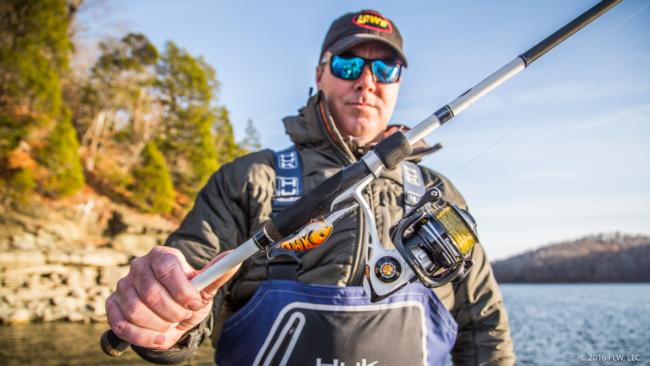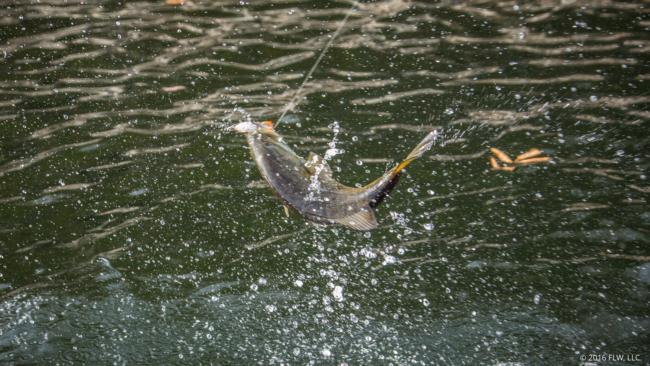Brad Knight’s Winter Smallie Cranking
How to heat up December with hard-pulling Southern smallmouths

Great smallmouth fishing is a standby of winter in the South, and a big draw for many hard-core anglers. Blade baits, the float n’ fly, and jigs and pigs are time honored cold weather techniques for a chance at the smallie of a lifetime. For Brad Knight, who loves nothing more than to catch fish cranking, winter is also the time for lights-out smallmouth cranking.
The situation
In late fall or early winter, before the water temperature really craters, Knight likes to target smallmouths with a crankbait during a brief window when they move shallow.
“Water that’s 52 to 55 degrees is prime time,” says Knight. “It’s really been hard once the water falls below 50 to consistently catch them cranking. Those fish are suspended down on the 45-degree banks and off the shelves, and they push shallow when it gets into the 50s. I think their strike zone shrinks a lot when the water cools down after that.”
Water temps in the low 50s is sometimes concurrent with the fall turnover on mountain lakes such as Dale hollow, and Knight says that the added color in the water resulting from turnover can work to your advantage.
“I like it to have a little color to it, but I don’t mind the clear water at all,” says Knight. “I don’t like if I can see 20 feet deep, but seeing down 5 or 6 feet is about right.”
With the right water conditions, Knight targets steep banks and bluffs in the main lake or mouths of the creeks.
“It’s a day-to-day process. Sometimes it’s creek-channel banks, sometimes it’s main-lake bluff-style banks or they can be set up on points,” explains Knight. “It’s a situation where you have to get a feel for what the day is. When they get to where they’re biting really well they set up on those main-lake points and secondary points in the mouths of the creeks with the wind on them. When you have a day with high skies that’s bright they seem to be just roamers, but as the wind picks up they can shift onto those points and you can call your shot.
“A really good point will have maybe two or three on it, but a 30-fish day isn’t uncommon. You’re just running a lot. Dale Hollow is a true pattern lake and doesn’t get a lot of pressure, so they get predictable and set up really well.”
The presentation
Fishing a mid-running crankbait, Knight likes to parallel steep banks with rock and shelves. He'll often have the boat only 20 feet or so off the shore and will be casting as far forward as he can.
“What I try to do is make a cast where 25 percent of the cast is on top of the shelf, maybe 50 percent of the cast is running down contacting the rocks on that shelf and another 25 percent can be out off of the bank. Then when you get a sense for where they are on the bank or if they’re down under your boat you can adjust.
“Smallmouths are sight feeders, so they like to track down those little shelves like highways,” Knight continues. “I think they get up on them when it’s windy and cloudy, and they suspend out more when it’s bright. It’s the same principle as what you see ledge fishing. It’s just a micro-sized version of it.”
Knight doesn’t do anything fancy on the retrieve, he simply cranks at a medium-fast pace until a big smallmouth takes matters into its own hands.
Tackle tricks
On the tackle side of things, Knight says he likes the Strike King 3XD and the KVD Flat Side. Both baits will come through rock well and run down to 8 feet or more. Other baits that fit the bill are a Storm Wiggle Wart (or similar crankbaits) and a Bandit 200. For colors, Knight likes to stick with different craw patterns, and will use a flashier craw in dirtier water or bad weather and more translucent, natural patterns in sunny conditions or clear water.
To cast and crank, Knight uses a 7-foot, 2-inch, medium-power, moderate-fast-action Lew’s Custom Speed Stick spinning rod, a 300 size, 5:1 gear ratio Lew’s Tournament Metal Speed Spin spinning reel, and 8-pound-test monofilament or copolymer line.
Knight likes to crank light with a spinning rod for the ease of use – not having to pick out backlashes with cold fingers is a good deal.
“It’s the perfect cranking rod for me for everything 8 feet and less,” says Knight. “I do everything from cranking Wiggle Wart-style baits and homemades [handmade balsa plugs] to throwing small topwaters with it.”
Other considerations
Knight’s winter cranking pattern does require you to get cold, and the best days for it will have the worst weather, so it’s not for the faint of heart. That said, if you love catching smallmouths, you’ll want to give it a try.
Knight likes to remove the split ring from his crankbaits and clip all his baits to the line. That way, he can change colors a few times in the day and not need to re-tie a bunch. Besides dressing warm, another key is to bring a net – winter smallmouths still have a lot of zip to them, and cold water and treble hooks can be a dangerous combination.
“Dale Hollow is an anomaly for the amount of smallmouths in it, but you can go to Norris or Douglas or any of the highland fisheries we have around here in east Tennessee and catch them,” says Knight. “They just don’t have the amount of smallmouths necessarily that Dale Hollow does.”
If you’ve got an itch for smallmouths and don’t want to fish slow, now’s the time to go scratch it. You’ll be out in the cold, but if you do it right, there will be plenty of big smallmouths to keep you warm.



